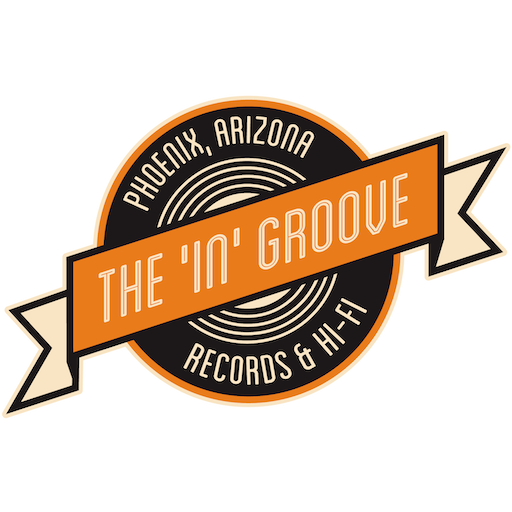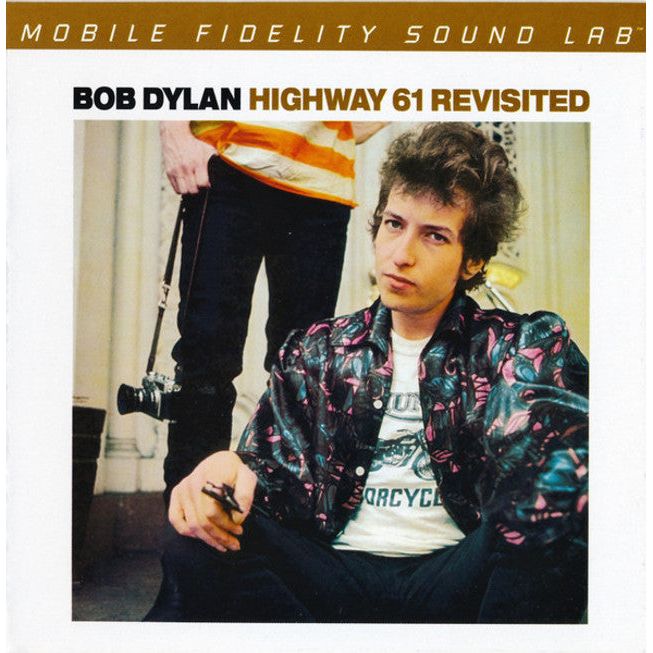Bob Dylan - Highway 61 Revisited - MFSL SACD
Bob Dylan - Highway 61 Revisited - MFSL SACD
Verfügbarkeit für Abholungen konnte nicht geladen werden
Bob Dylan's First Entirely Rock-Backed Album Marks Sea Change in Sound of Popular Music: Highway 61 Revisited Includes "Ballad of a Thin Man," "Desolation Row," "Just Like Tom Thumb's Blues"
Brilliant Collision of Evocative Poetry, Swirling Roots-Based Soul, and Hard-Driving Blues Sounds Incredible on Mobile Fidelity SACD.
Ranked #4 on Rolling Stone's 500 Greatest Albums of All Time List: Album-Opening "Like a Rolling Stone" Challenging, Bold, Revolutionary - And Arguably the Best Rock Song Ever Recorded
Its title references the road that spans North Minnesota to the Mississippi Delta, and the formative blues, country, and roots sounds connected to its existence. The highway also lays claim to towering musical myths and deaths, many tied to the blues lexicon and narrative. All figure prominently on the revolutionary beacon that is Highway 61 Revisited, the 1965 set that overturned rules, upended preexisting limits, and utterly changed everything in its path. Ranked the fourth-greatest album ever made by Rolling Stone, its reach, power, and content boggle the mind more than five decades after its release.
Mastered on Mobile Fidelity's world-renowned mastering system; the SACD presents the life-altering music in reference-quality sound – so much so that the record's famous first lightning-strike note is now indeed the "snare shot that sound[s] like somebody'd kicked open the door to your mind," as once described by Bruce Springsteen.
Recorded amidst a time of unfathomable turmoil and frustration that witnessed Dylan booed by fans, labeled a traitor, and call into question his work, Highway 61 Revisited roars and snarls, jabs and criticizes. Its bonfire of cynicism, fury, indignation, and absurdity forever transformed rock, what it could mean, and what it could do. Supported by a thundering, commanding band that included guitarist Mike Bloomfield and organist Al Kooper, Dylan hopscotches between tempos, moods, and melodies. The symmetry of the songs references a scattered hybrid of R&B, blues, folk, soul, gospel, vaudeville, and garage rock pieces that Dylan assembles in the shape of the world's greatest aural puzzle.
Outside of "Like a Rolling Stone" – the six-minute-plus anthem that both challenged and chewed up all preconceived notions of an acceptable radio single by way of its length, ambition, and vitriol – every tune was captured shortly after Dylan's contentious performance at the Newport Folk Festival. The lingering impact of the hostility comes through in both the searing music and rich, literate, zinging poetry. Dylan's sneering tones, raucous arrangements, and unmistakable resentment toward both the establishment and counterculture that adopted him, and assume the form of songs such as "Ballad of a Thin Man," "Queen Jane Approximately," "Tombstone Blues," and the stupefying "Desolation Row."
At its core, Highway 61 Revisited is about experience, reality, and the cruelties and truths that lie outside soporific safety nets and bourgeois ideals. These reasons – and the bold musicianship, ace performances, inimitable sonics, and vast lyrical expanses – are why the album means as much today as it did in the mid-1960s. Akin to Sgt. Pepper's Lonely Hearts Club Band and Dark Side of the Moon, this is an album that everyone needs to own and hear in the best-possible fidelity. And in the mix the artist spent time perfecting. Mobile Fidelity makes it happen.


